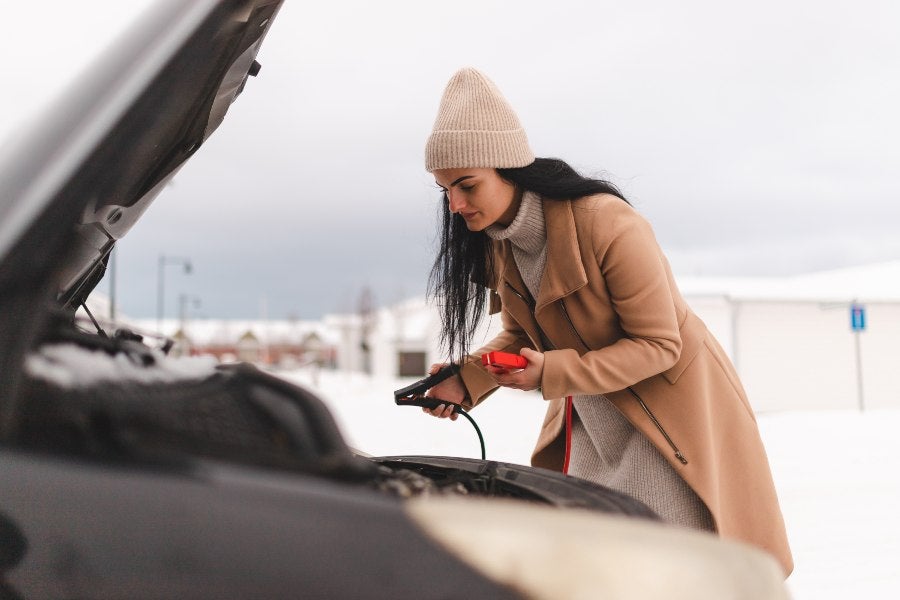Emergency Car Kit Essentials
Introduction
Preparing a car emergency kit is a proactive measure to ensure safety and readiness in the event of unexpected roadside emergencies. A well-stocked emergency kit can be invaluable during mechanical breakdowns, extreme weather conditions, accidents, or other unforeseen situations while driving. In this article, we’ll list what we consider to be absolute essentials to include in your emergency kit.
Basic Tools and Equipment
- Jumper Cables or Battery Powered Jump Starter – Vital for restarting your car or someone else’s if the battery dies.
- Air Compressor – A portable air compressor can be invaluable for inflating a flat tire.
- Seatbelt Cutter and Window Breaker – These tools can be lifesaving in an accident where quick escape is necessary.
- Tire Pressure Gauge – Regularly check tire pressures to prevent blowouts and improve fuel efficiency.
- Extra Fuses – Handy if a fuse blows while you’re on the road.
- Rags or Paper Towels – Needed for cleanups after working on your car or changing a tire.
- Spare Tire, Jack, and Lug Wrench – Make sure your spare is in good shape and inflated to the correct pressure.
- Basic Tool Kit – Include hammer, screwdrivers, pliers, and multi-tools for minor repairs and adjustments.
- Reflective Warning Triangles or Flares – Increases visibility and safety during roadside stops.
- Flashlight with Extra Batteries – This is important for visibility during emergencies after dark.
- Reflective Safety Vest – This makes you more visible when you’re having car trouble.
Safety and Survival Supplies
- First Aid Kit – This should include bandages, antiseptic wipes, pain relievers, and other basic medical supplies.
- Water Bottles and Non-Perishable Snacks – These are essential for hydration and sustenance if stranded.
- Weather Appropriate Clothing – You should include gloves, hats, rain ponchos, and a spare jacket in your kit.
- Thermal or Mylar Blankets – These are more effective that regular blankets in retaining body heat.
- Fire Extinguisher – Specifically, a Class B and Class C type for automotive fires.
Navigation and Communication Tools
- Fully Charged Power Bank for Your Cell Phone – In addition to the power bank, you can also pack a solar battery charger.
- Physical Road Map – This is useful if GPS or mobile service is not available.
- Emergency Contact List – Include numbers for roadside assistance, family members, your insurance company, and emergency services.
Seasonal and Regional Items
- Ice Scraper and Snow Brush – This is vital for winter driving in snowy regions.
- Rain Gear – Pack an umbrella, raincoat, or poncho in your kit.
- Sand or Cat Litter – This is a big help when you need extra traction.
- Foldable Shovel – This is useful for digging out your vehicle if it’s stuck in snow or mud.
- Compact Sleeping Bag – Handy for unexpected overnight stays in your vehicle.
Customize Your Kit for Special Needs
- Allergy Medications – Include antihistamines if you have specific allergies. If you require prescription medications, keep a spare supply.
- Baby and Child Supplies – Consider age-appropriate food, clothing, and entertainment.
- Travel Sized Hygiene Products – Toothbrush, toothpaste, and wet wipes can be refreshing during extended roadside conditions.
- Pet Supplies – If traveling with pets, include food, water, and a leash.
Miscellaneous Items
- Duct Tape – Duct tape is a versatile tool for temporary fixes.
- Notebook and Pen – For taking notes, leaving messages, and exchanging insurance information in the event of an accident.
- Cash – Keep a few small bills and coins for payphones, vending machines, or toll booths.
Maintenance and Updating
Your car emergency kit should be checked and updated regularly.
- Seasonal Checks – Adjust your kit for the changing seasons.
- Battery Replacement – Regularly replace the batteries in your flashlights or power banks.
- Expiration Dates – Keep track of expiration dates on medical supplies, food items, and your fire extinguisher.
Summary
Building and maintaining an emergency kit for your vehicle is an important step in ensuring your safety and preparedness on the road. By including these items in your kit, you can be better equipped to handle a variety of roadside emergencies. Remember to store your kit in an easily accessible part of your vehicle, such as the trunk or under a seat, so that it’s readily available when needed.
Contact Tire Pirates for Any Issues with Your Vehicle
For over 25 years, Tire Pirates in Calgary has provided top-quality tire and auto repair services at two locations in Calgary: Foothills and Chinook. With a strong emphasis on customer satisfaction, our skilled technicians offer a wide range of services including oil changes, tire installation, brake service, alignments, and many other automotive services including repairs. Our tire catalog covers all driving conditions and vehicle types, including construction, industrial, and agricultural equipment. We focus on delivering quick, efficient service, ensuring customer satisfaction and the best value for your money. Schedule your appointment now!
RECENT POSTS
categories
- Uncategorized
- Air Pressure Tires
- Winter Tires vs. All Season Tires
- All weather tires
- Custom Wheel Options
- Brake Pad Replacement Calgary
- Spare Tire Replacement
- Temporary Spare Tire
- Tire Alignment and Balance
- Getting Tires Fixed
- Do My Tires Need To Be Replaced
- Tire Repair in Calgary
- Transmissions
- Wheels and Tires
- Engine Light
- Car Battery
- Fuel Efficiency


